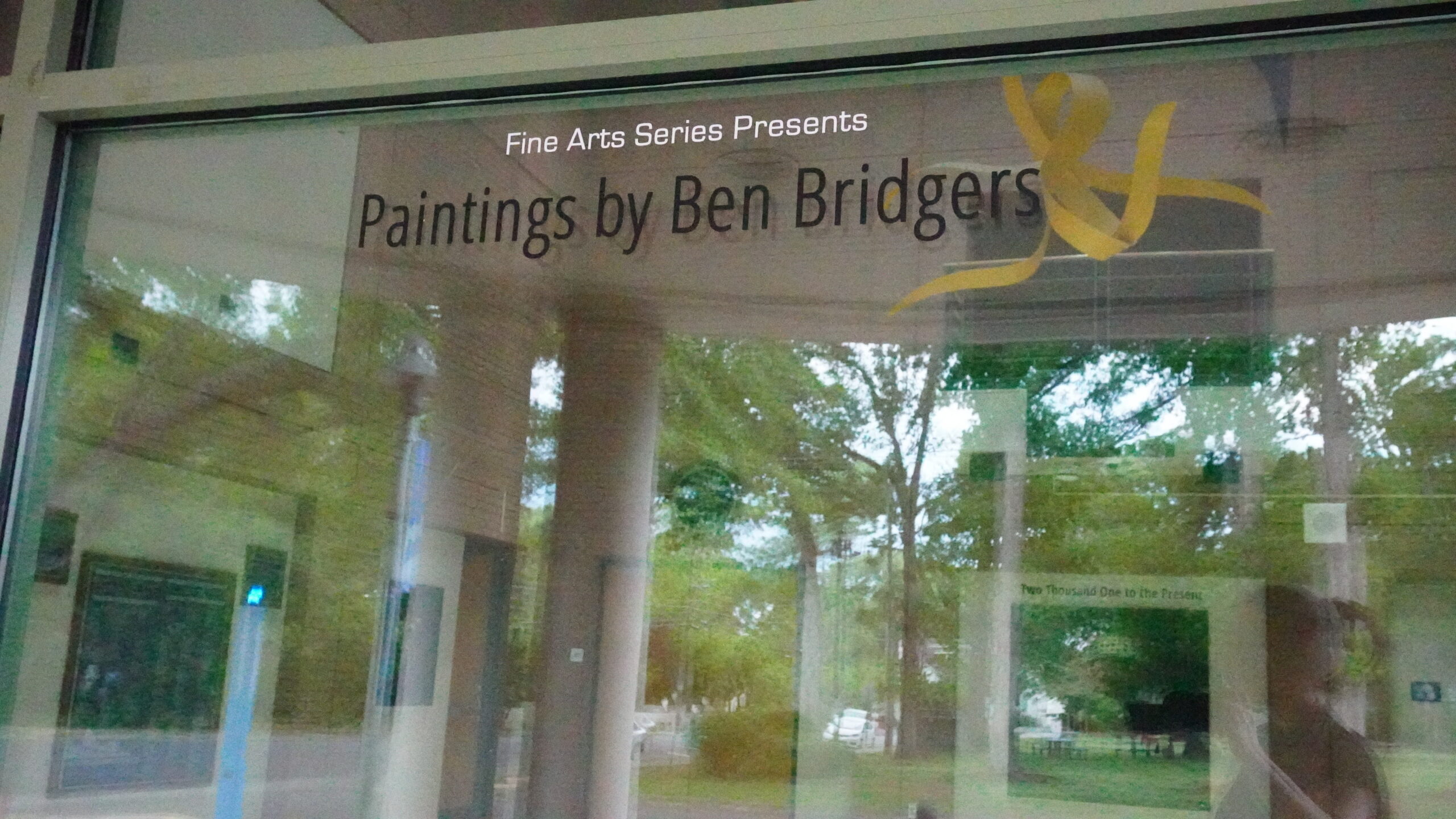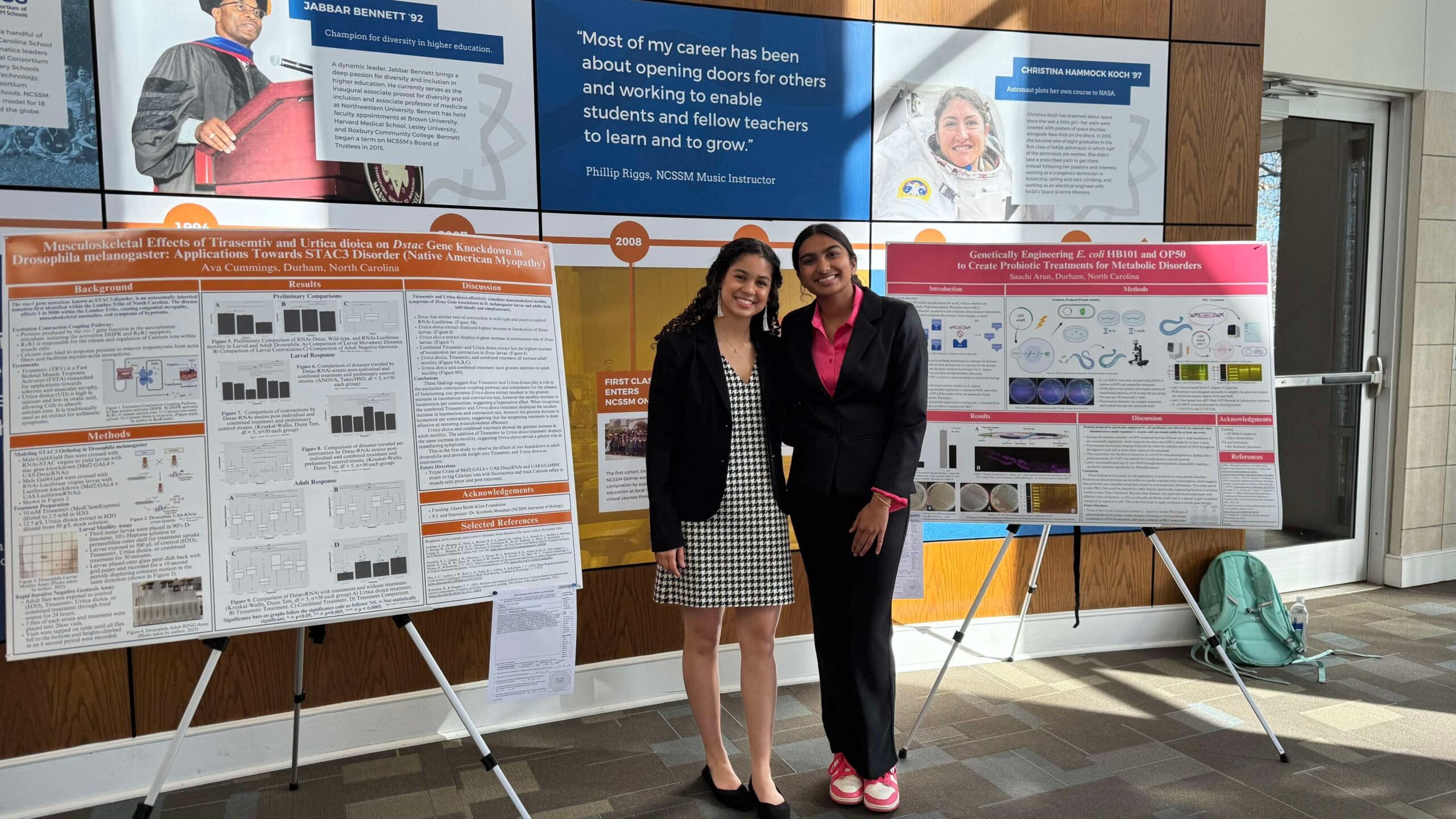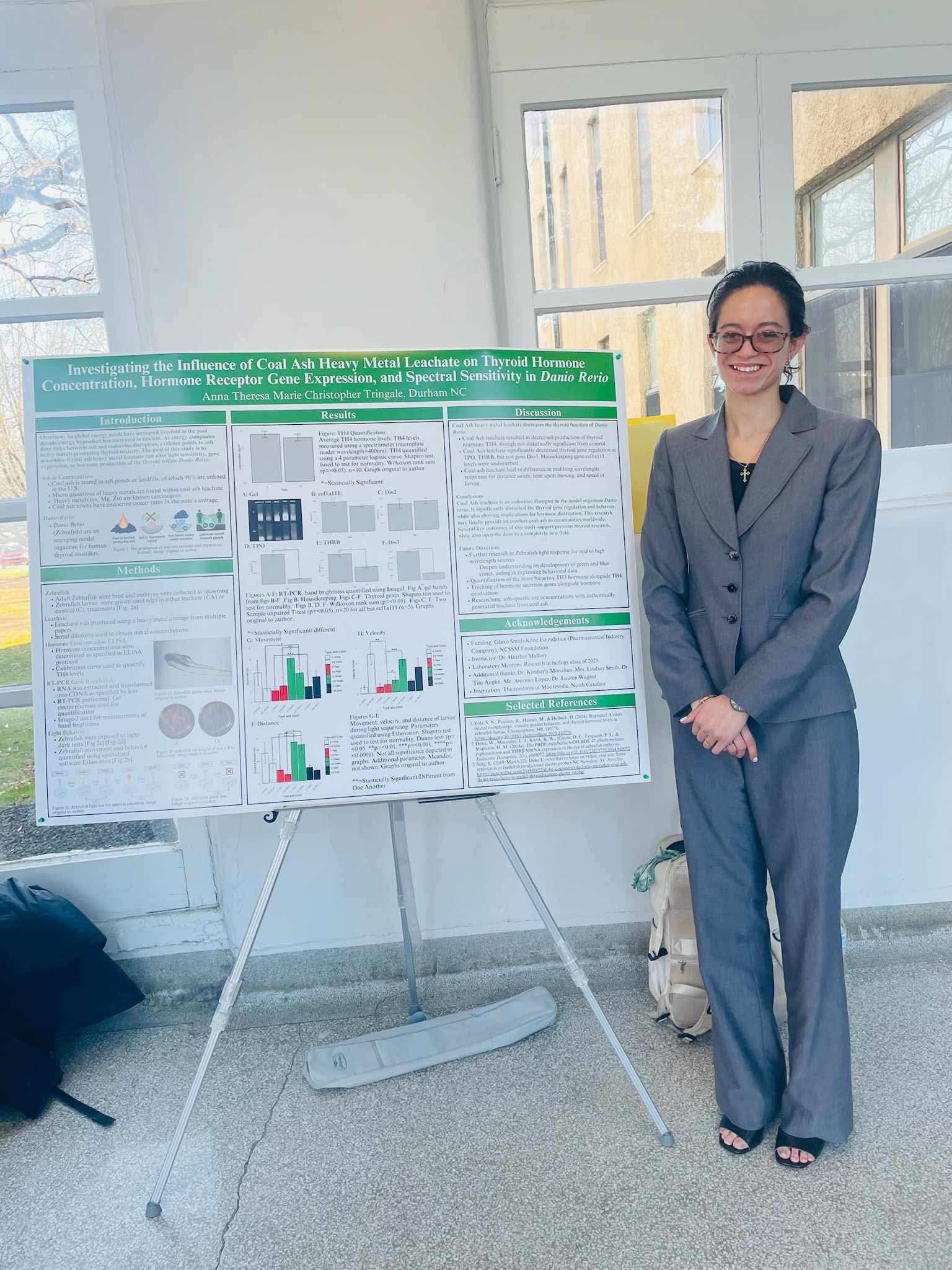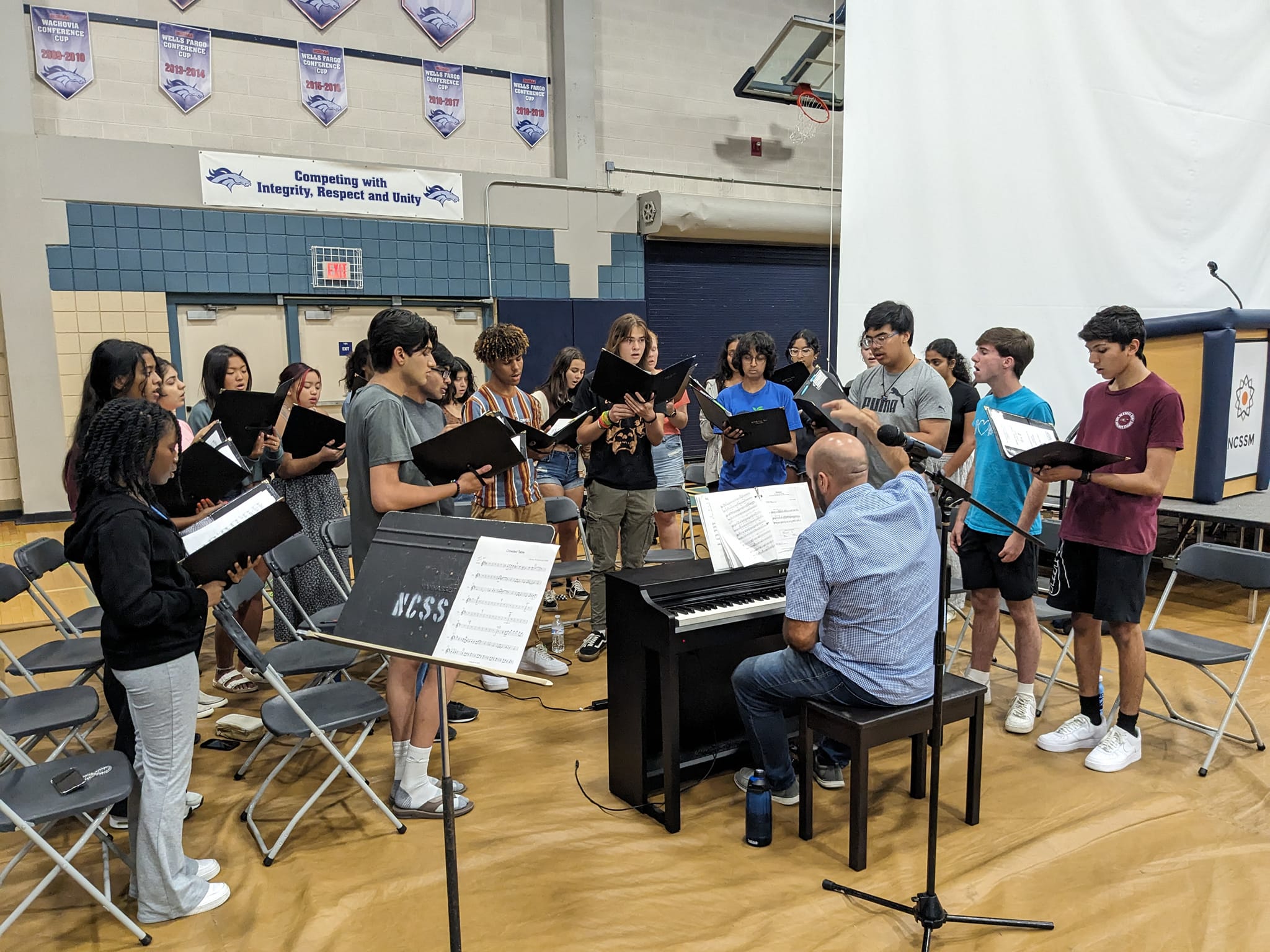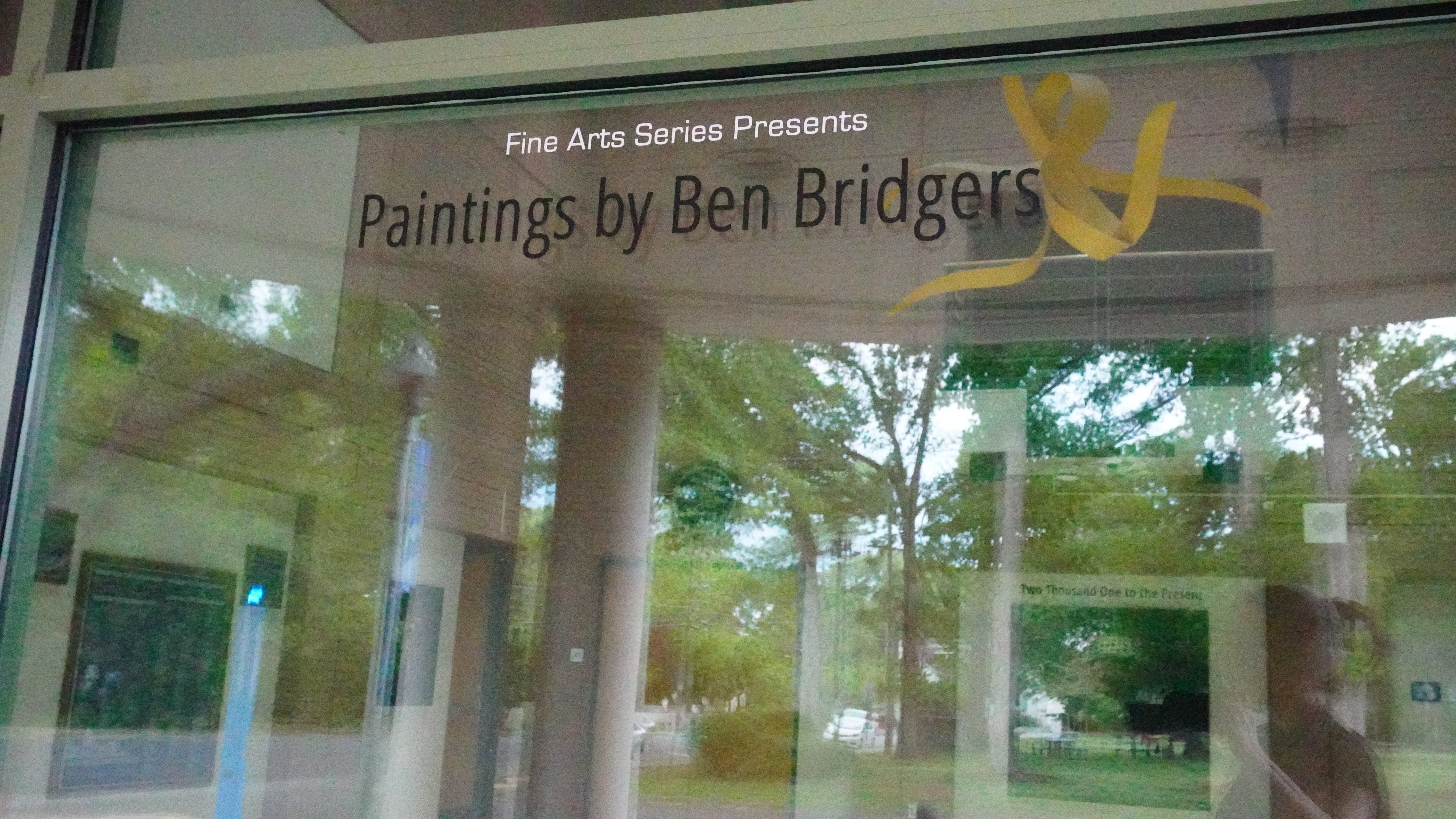
By Teresa Fang, Stentorian Editor-in-Chief
I went to Ben Bridger’s exhibit in ETC lobby on April 25, and after checking out his works, I talked extensively with the artist about his process of making art from sketches to varnish, and a little about things I had heard before, read about, but never did, like mixing paint or stretching canvases. I had observed from his charcoal drawings that they were more abstract, and even when they weren’t inherently in the shape of any discernable object, they looked like familiar objects. On the other hand, his paintings felt like whimsical little furry creatures shrouded in darkness. It was cool to see the composition of things that the human brain thought up of and finding out that they somehow worked when executed like this.
The darkness of the black paint impressed me, and the varnish on the entire painting was so reflective that it served as a sort of mirror as I waved my hands in front of it. It revealed the smoothness of the layers of paint, and it was like the painting was created on just one layer. The fur on the creatures was one with the black background itself; the white fur trailed into the abyss like the creature had simultaneously materialized and crawled out of it. I wondered if this effect was created using a fine fan brush, one so flexible if I ran a finger over the bristles, the bristles would bend a full 90 degrees.
So, I asked Ben Bridgers about it. He replied it was not pure black, and shared a recipe for the black: crimson alzarin, ultramarine blue, a bit of something something yellow, a bit of some other two colors… he had multiple recipes for different toned blacks. I respect that mightily. I told him I preferred prussian blue and crimson red hue myself, and we compared recipes briefly. Color theory became more real as I imagined a palette knife digging into turds of color and producing a black splat on a piece of palette paper. And I had never met someone who mixed their own paints before, and as much as I would like to try mixing white lead powder, for starters it’d be hard to find some legal sellers, and if I did acquire some, my heart does not lie so much in the processes before paint hits the canvas.
But for Bridgers, that proccess was evidently very important. He made his own canvases his way, from start to finish, at around five or six per 0.5-1.5 years at a time in his studio. My initial thought was how big his studio had to be, but he alluded to so many trips outside his studio that I had to readjust my thoughts. Perhaps his studio was the whole world; he had traveled abroad to Italy during his time at the University of Georgia and sketched people, parks, animals, and trees on small pieces of paper to bring back to his studio and inspire his works. I, too, find a particular cuteness in making art on tiny things, which makes trips outside like this precious condensations of creativity. But still, I am not one with the patience to stretch canvases, cover it with rabbit skin glue, wait three months, then do some extra stuff before being able to paint on it.
I am impressionable though, and I will scratch “handmixed paint” off my bucket list sometime soon. One thing that will not come to me soon, however, is an eye for abstractness. Bridgers calmly said the eye to come up with new ideas for abstract work takes time and practice, and even he brings four-ish of his works with him to people-watching trips, just to remember his style and have a starting point for the final work. I look at this man, bald, maybe in his 40’s, and I think of his classical art training and years of teaching art to college students. I think of my tendency to not sit still, especially in foundational, technical art courses with private instructors. I think back to my paintings, each one of them based off a photo or multiple photos clipped together, and I cringe at my inability to be original.
Maybe that is just pessimism and strict standards. It is normal, if not encouraged, to be inspired by other works in life–natural and artificial. And it is normal for an 18-year-old to have less art experience as a middle-aged experienced artist–maybe this summer I will sit myself down and finally practice skeletal anatomy, which was a promise to myself made years before. As I prepared to leave this exhibit, stealing the last of the tangerines from the snacks table of course, I hear Bridgers talking about him working on multiple paintings at once. And so, to my 26 paintings blocked out in thin burnt umber but rotting in the corner of my studio space, I’m inspired once again to throw upon each a stroke of color—or prussian blue black—before I leave them alone again.
